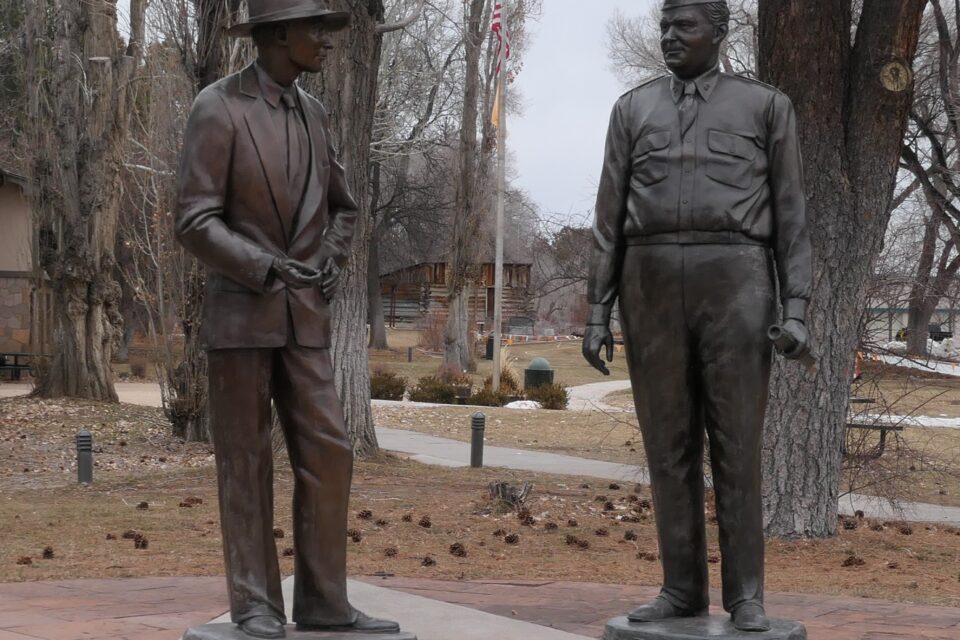FEBRUARY 6, 2024: I had the wrong impression about Los Alamos. I thought it would be located in a very flat, non-descript area, similar to the White Sands Missile Area we drove through on Sunday. The opposite is true. Los Alamos is located about a forty-minute drive northwest from Santa Fe. On the way, you pass through three Indian reservations, cross the Rio Grande river and then make your way uphill through exceptionally beautiful orange and beige mountain scenery, until you reach the plateau upon which Los Alamos sits.
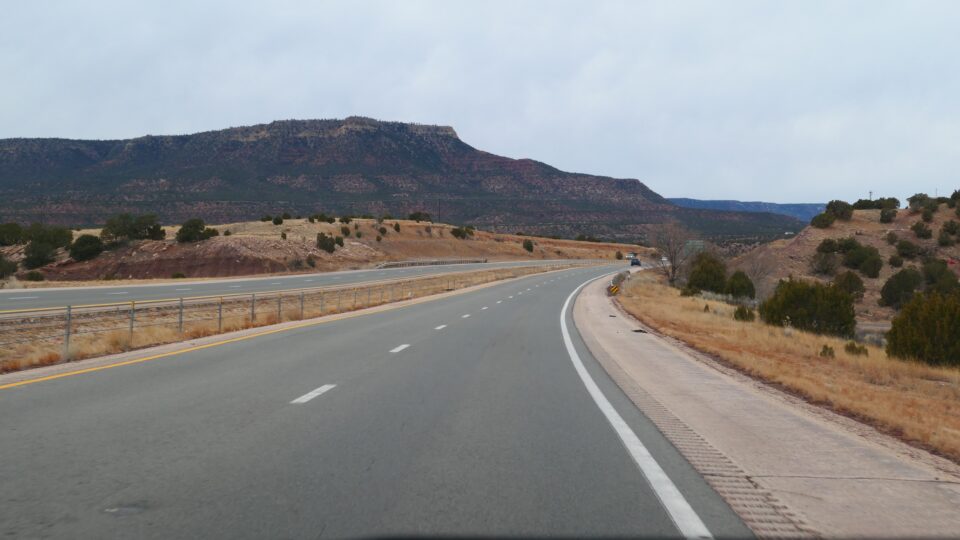

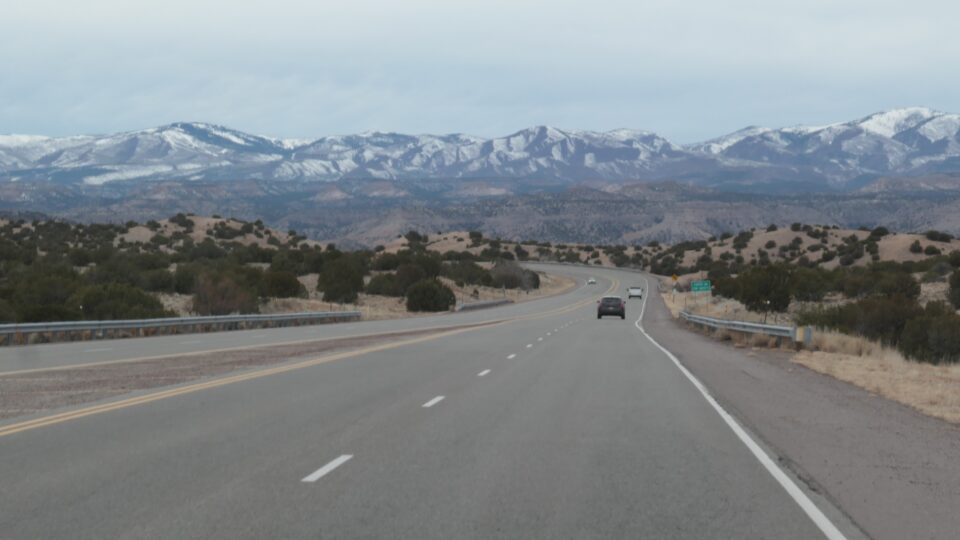
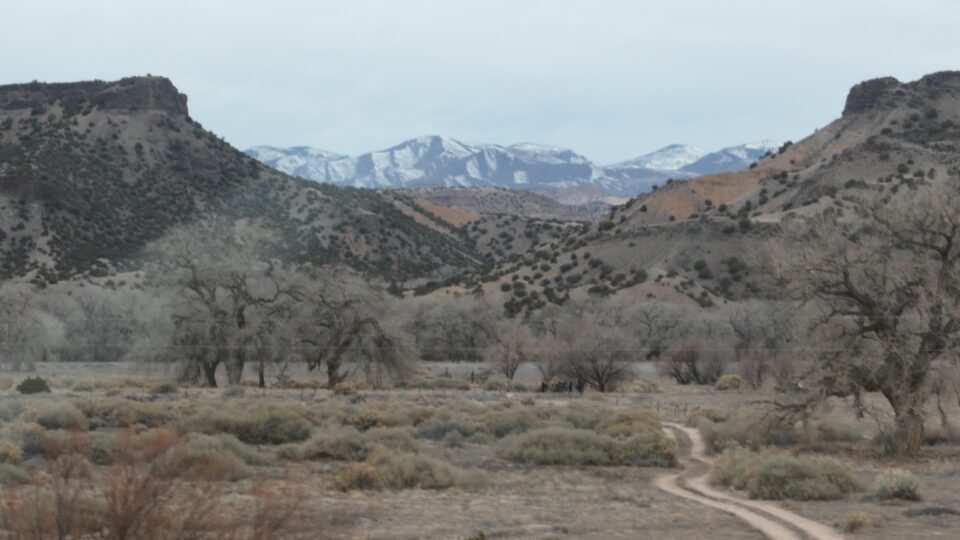
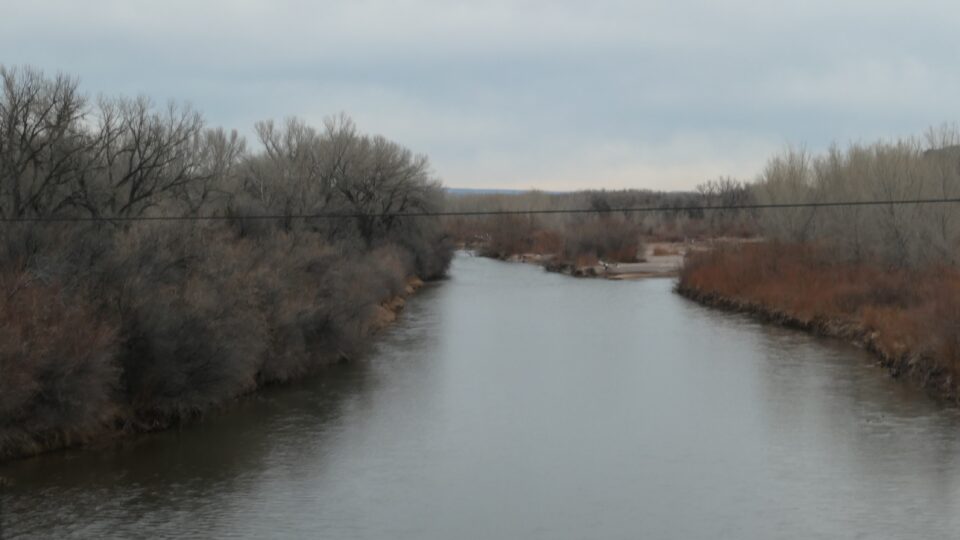
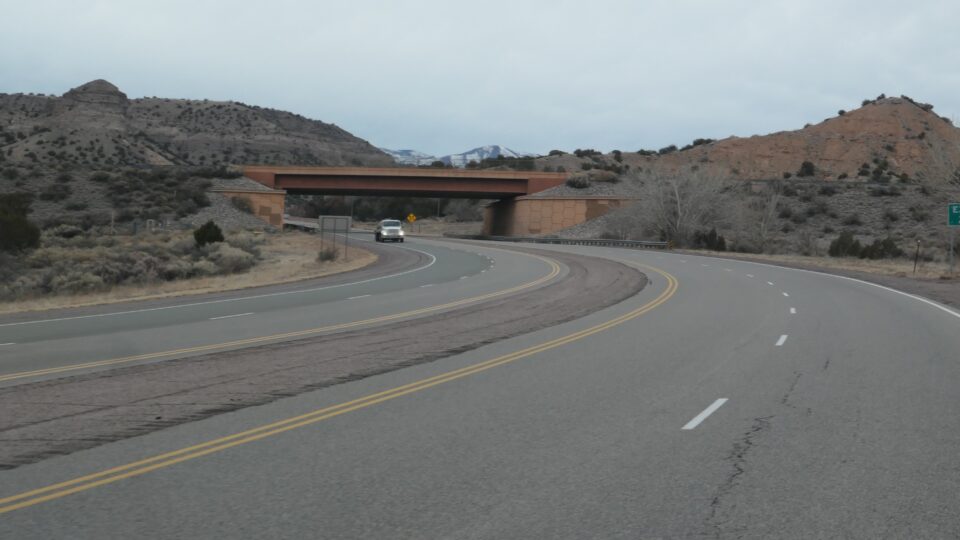

Turns out, that when Oppenheimer needed to find a place to locate the bomb-production facility of the Manhattan Project, he chose Los Alamos because of its natural beauty. He believed that the beautiful location would help the weapons team endure the strenuous challenges ahead. Los Alamos met other selection criteria such as being isolated because of the project’s top-secret status, and sparsely populated in the event of a nuclear accident. In addition, at the time, Los Alamos was the location of the Los Alamos Ranch School, an exclusive boarding school for boys. In 1942, the school was given evacuation orders, and its buildings were then used to house the scientists.
We were going to spend the day in Los Alamos searching for any mention of the Jewish connection to the Manhattan project.
Our first stop was the Bradbury Science Museum, the museum of the Los Alamos Scientific Laboratory. The museum has many interactive exhibits and videos that explore the origin of the Lab’s capabilities developed during the Manhattan Project and also highlight the Laboratory’s current research and innovations.
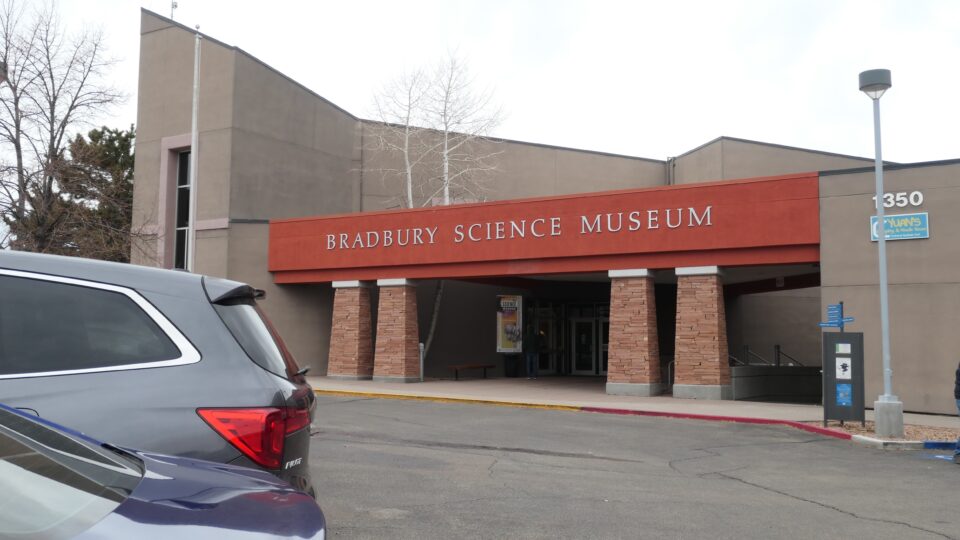
The place had a huge number of exhibits and was full of many schoolchildren busy exploring. I found it overwhelming. Too much information. What I did enjoy was a short documentary movie about the history of the Manhattan project. I knew that this was the US project to develop and produce the atomic bombs that were then dropped on Japan. What I had not understood until then was the huge size of the program. Is operated from 1942 to 1946, and at its peak it employed 130,000 people in over 30 sites across the US, the UK and Canada.
The science museum has three main areas – History, Research and Defense. In the history room stand two statues – one of Robert Oppenheimer, the director of the Los Alamos Laboratory and the other, of General Leslie Groves, the project’s military leader. Besides Oppenheimer, several other Jewish scientists are named in the exhibits, but their Jewishness is never mentioned.
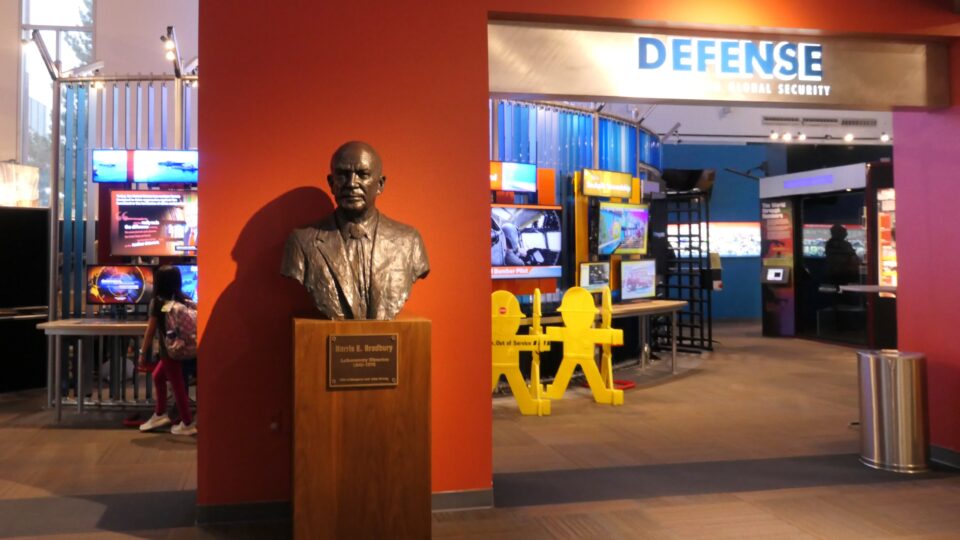
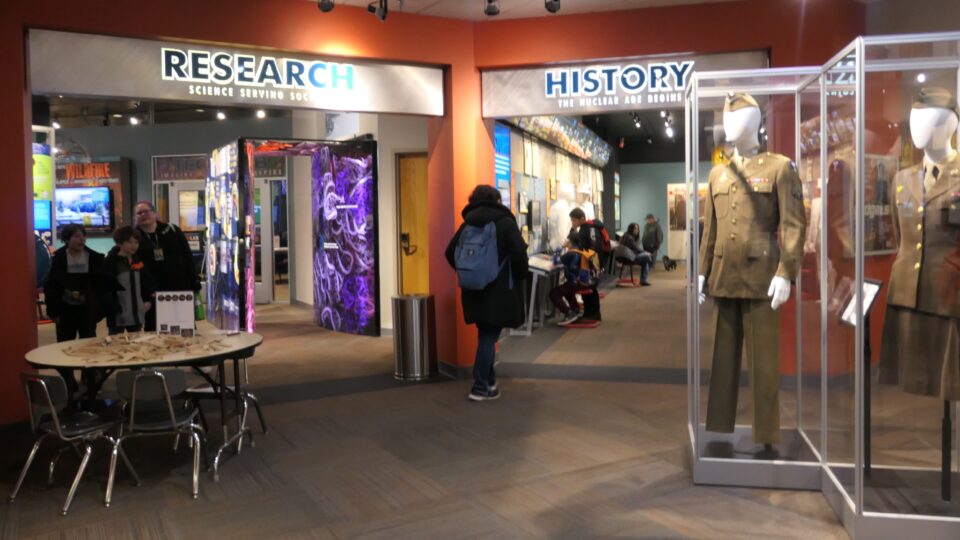
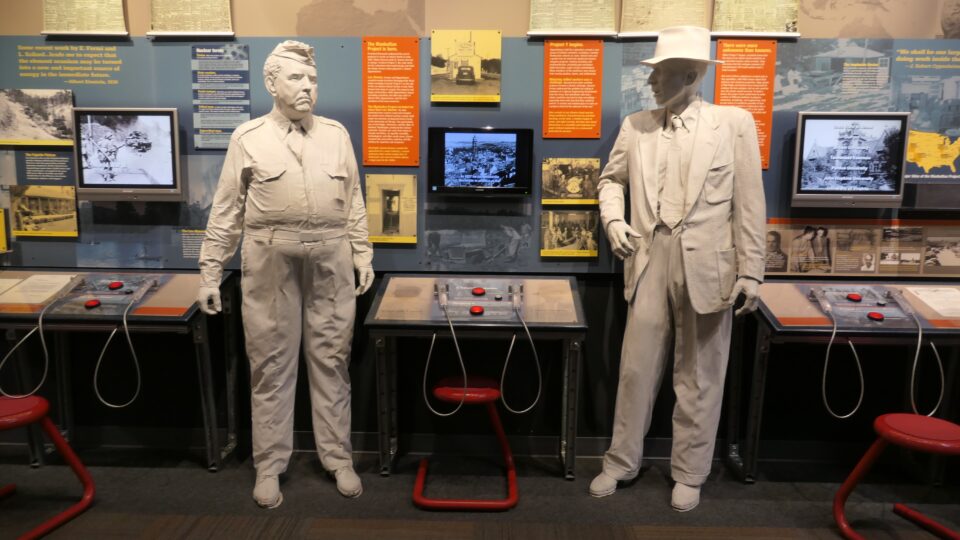
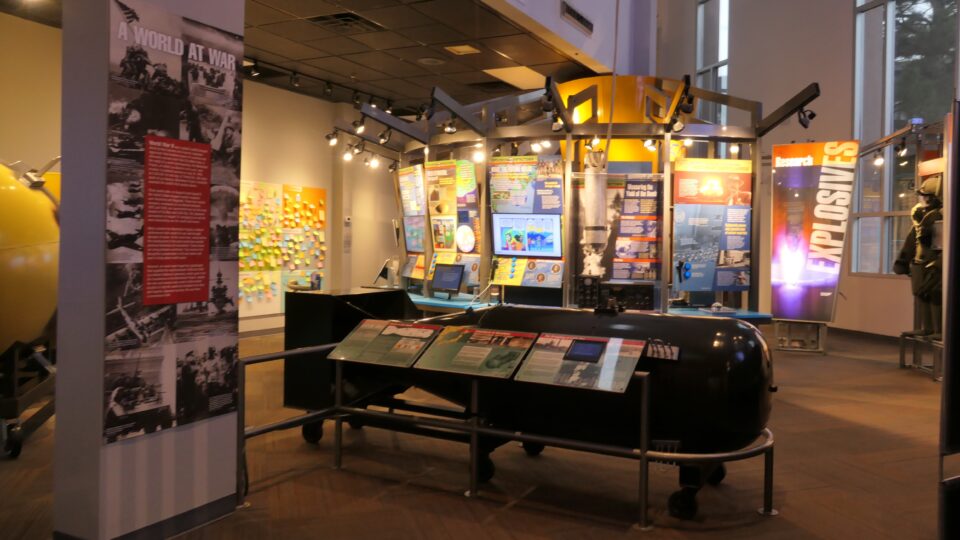

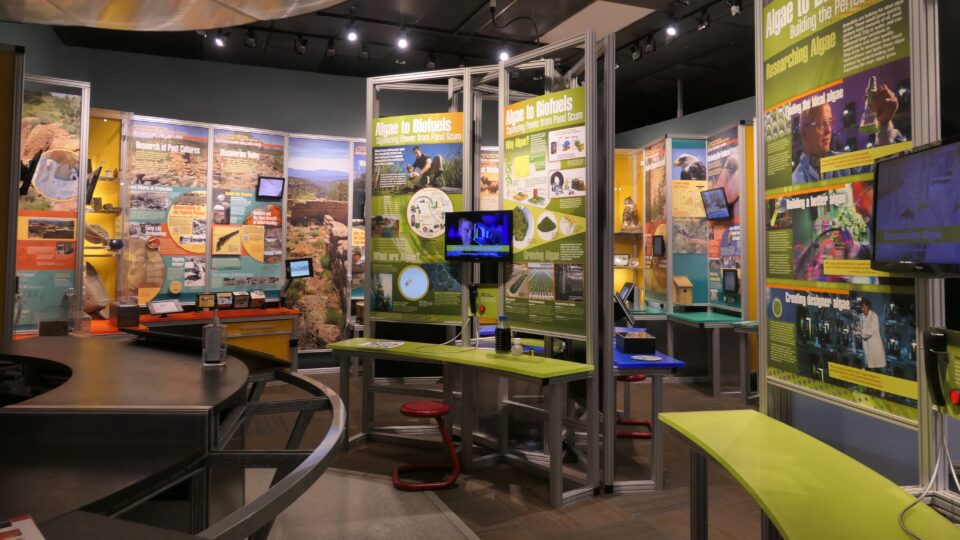
From the science museum, we wanted to go to the Los Alamos History Museum but had some trouble finding it. The tourist visitor center was nearby, and we went there for directions. In chatting with the worker in the visitor center, we told her we planned to camp that night near Los Alamos and reach Santa Fe tomorrow. She advised us however to return to Santa Fe this afternoon. A large snowstorm was predicted for this evening, and driving back to Sante Fe might be difficult tomorrow. We were also worried that in the very cold weather, the water pipes in the motorhome might freeze. Sante Fe, being at a lower altitude than Los Alamos, would be warmer, we hoped.
There were still a couple of hours before we needed to start the drive to Santa Fe, so from the visitor center we made our way to the history museum. On the way, we passed two large bronze statues, once again of Oppenheimer and Groves, and as the plaque near the statues says, they were “two gifted WWII leaders whose unique partnership won the wartime race to build an atomic bomb”.

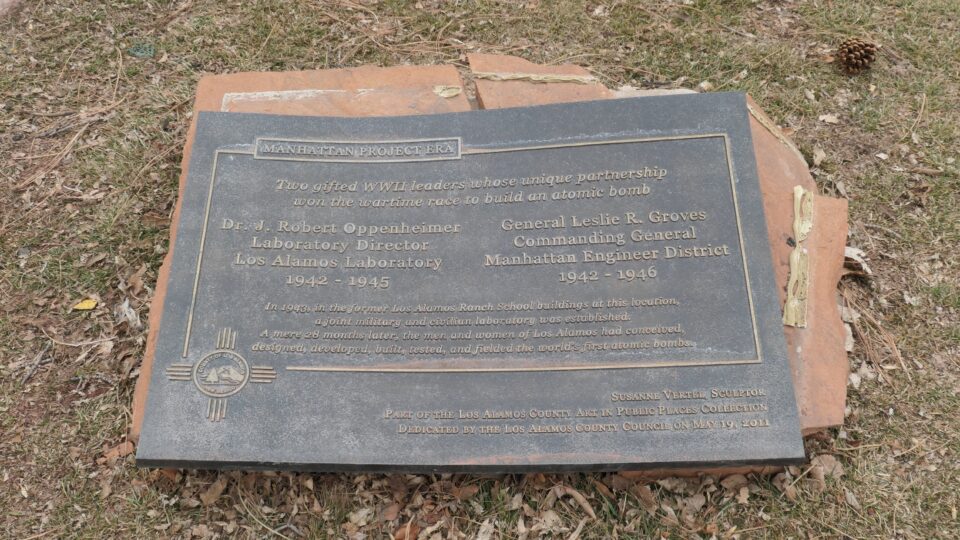
The tribute on the plaque continues and nicely summarizes the history of the area in a nutshell:
“In 1943, in the former Las Alamos Ranch School buildings at this location, a joint military and civilian laboratory was established. A mere 28 months later, the men and women of Las Alamos had conceived, designed, developed, built, tested and fielded the world’s first atomic bombs.”
The statues stood in front of the Fuller Lodge. This large building was once the dining room of the Los Alamos Ranch School. During the Manhattan Project, the lodge provided meals and rooms for visiting scientists, and space for dances, plays, and other events. It continues as a community center today, hosting meetings, lectures, and weddings.
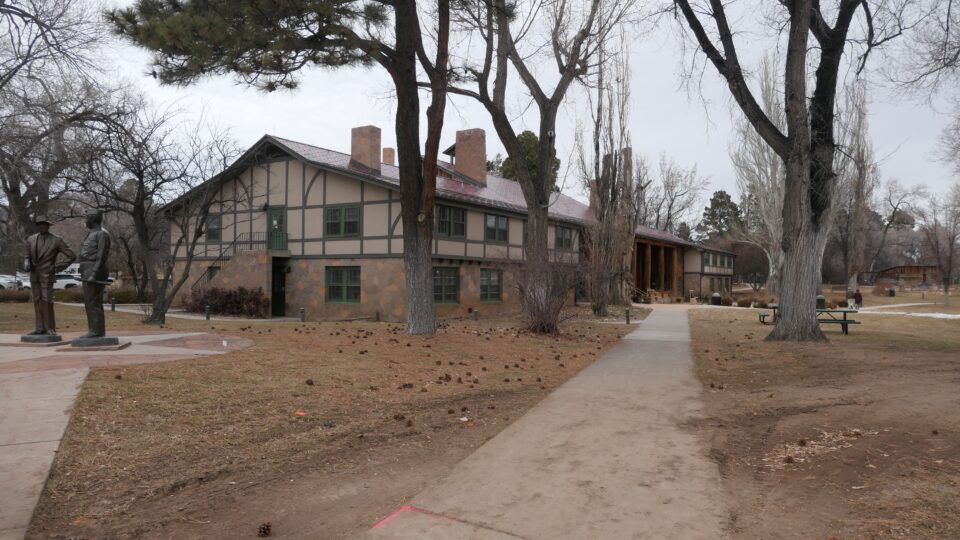
Behind the Fuller Lodge, we found the Los Alamos History Museum. It is in the oldest, continually used building in the Los Alamos area. When the Ranch School was here, it was the school’s infirmary. During the Manhattan project, it was the Guest Cottage where visiting dignitaries stayed. After the war, it was home to the manager of the Fuller Lodge and since 1968, it has housed the history museum.
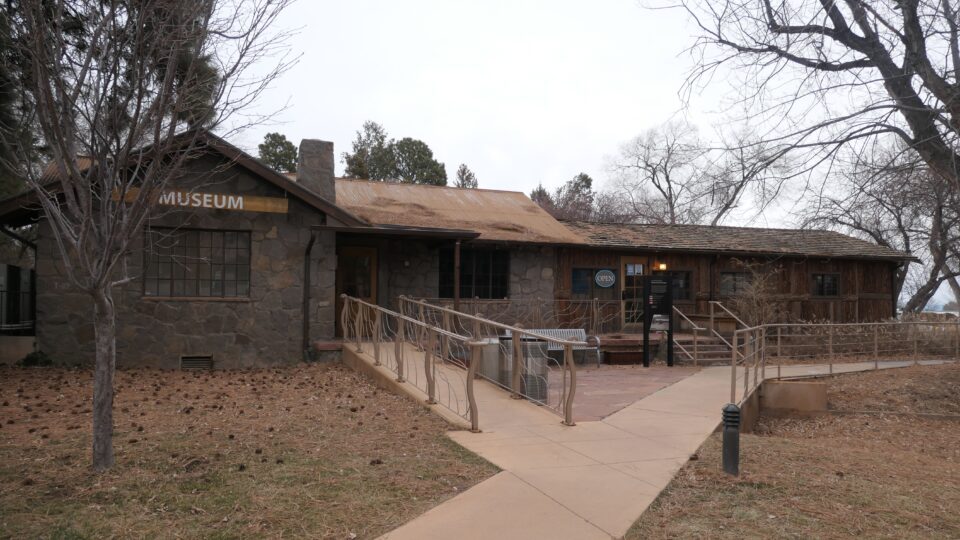
In contrast to the science museum, which was very noisy, interactive, and overwhelming, the Los Alamos History Museum was small, subdued, and quiet. It had several display areas – the first an overall timeline of the area from the Ancestral Puebloans who originally lived here, to the Homesteaders, then came the Los Alamos Ranch School, followed by the Manhattan project, and then came the expansion during the Cold War when the once-secretive Los Alamos became an open city, and up to contemporary Los Alamos.
One area was dedicated to the Los Alamos Ranch School. It included cards about the former graduates – the privileged families they came from (grandson of the founder of Burroughs Adding Machine Company, descendent of the Colgate Toothpaste family, from the family that founded Quaker Oats, etc.) and what became of them.


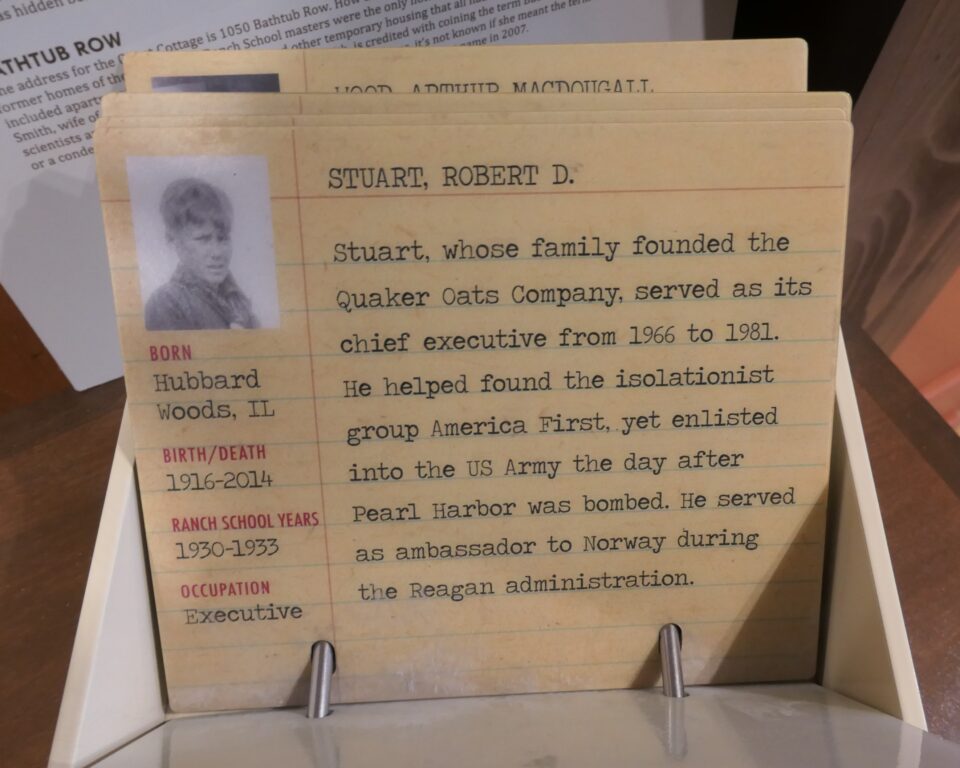
Another section of the museum was dedicated to the Manhattan Project – its challenges and its achievements.
The Los Alamos History Museum is located at the edge of a residential area where the Manhattan Project scientists once lived. Some of the houses looked like log cabins. The street was named Bathtub Row because while many of the scientists lived in hastily built homes, here were well-built houses with luxurious bathtubs. Bathtub Row appears in the film Oppenheimer. For the filming, the asphalt road was covered with dirt to resemble the time of the Manhattan project.
After looking through the exhibits here, we were told to walk to the third house on the right, where the history museum continues. This additional building of the museum was once the home of Hans Bethe, head of the Theoretical Division at Los Alamos. Next door was the home of Oppenheimer, which is now being converted to also be a part of the history museum.
We walked through the front door, into the living room of the Hans Bethe house. This was a house frozen in time, full of mid-century modern furnishings and a kitchen with appliances from the past. In the living room an older man was sitting, a retired scientist who now volunteers as a guide to answer any questions tourists might have. In chatting with him, we told him we were from Israel, and he pulled out this huge notebook. He apologized, said his memory is not what it used to be (we perfectly understood) and explained that he now keeps information that he wants to share in this notebook that he created. Inside were many sheets of paper, each in a plastic covering, and the many pages were divided into sections. One of the sections was all about the Jewish Contribution to the Manhattan Project. BINGO!
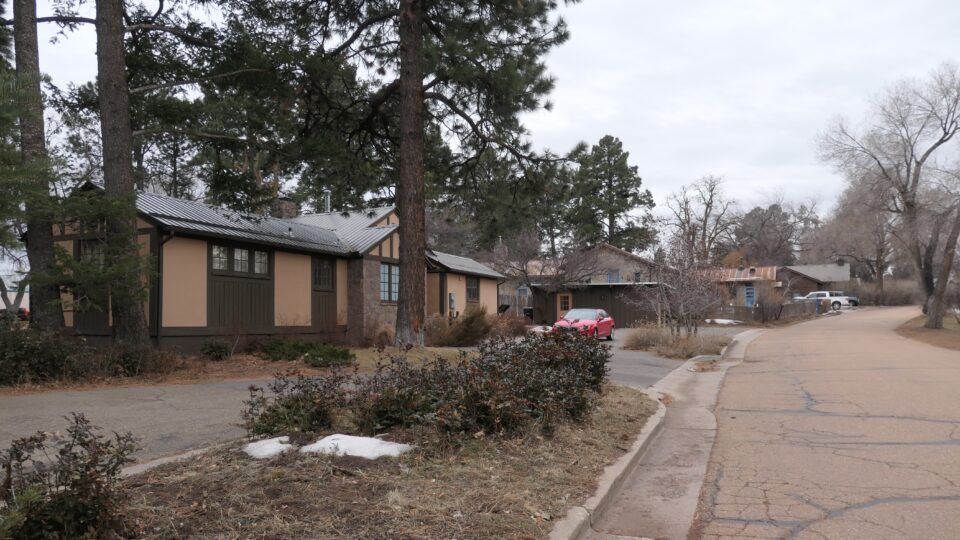

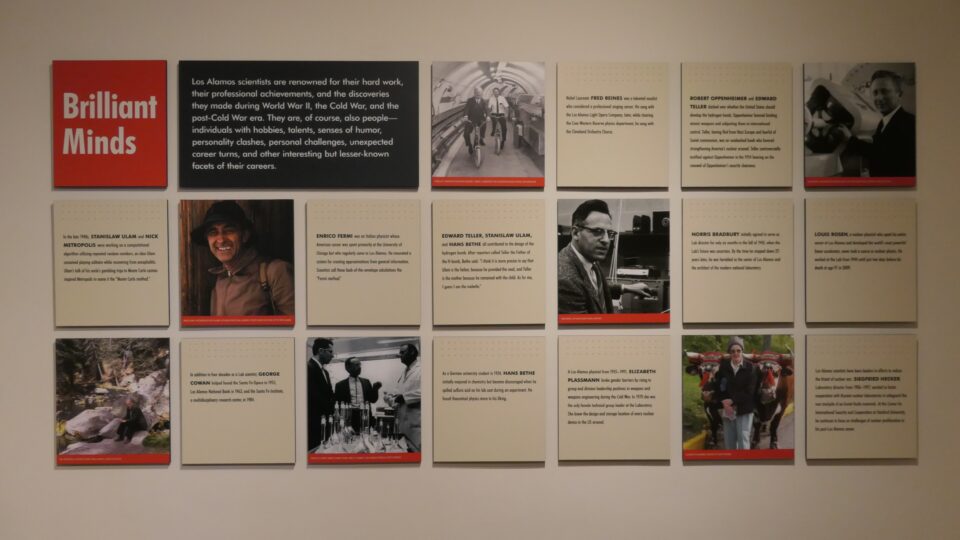
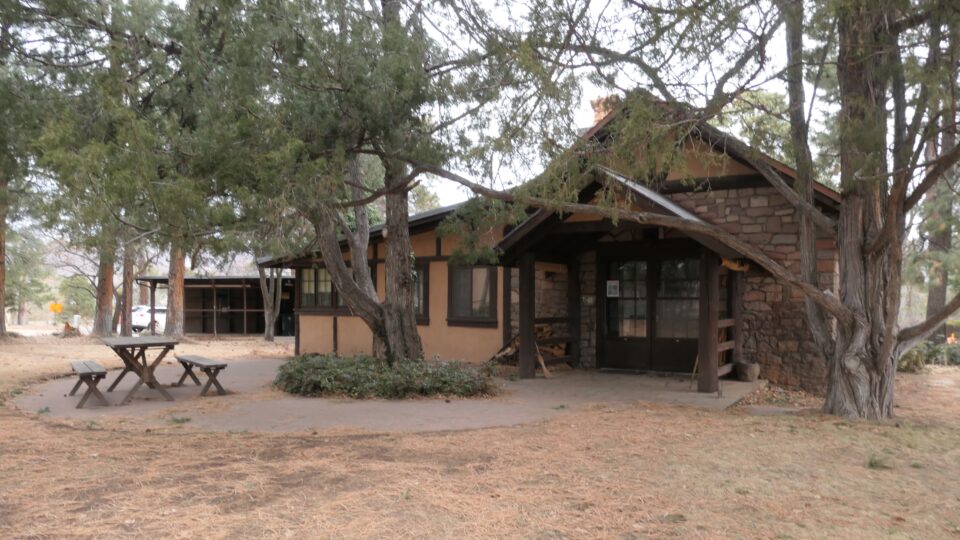
The guide told us about Rabbi Schlacter, a rabbi in Sante Fe, who gives a presentation called Jews in Theory. This is a clever name with a double meaning – first Jews in Theory refers to the Jews in the theoretical physics division of the Manhattan Project. It also means that these Jews were non-practicing Jews – they were Jews in theory only, not identifying with their religion.
The guide had printed out all the slides from the presentation, and we looked through them. Of the 8 groups in the theoretical physics division of the Manhattan Project, 6 were headed by Jews. The project won four Nobel prizes, all of which went to Jewish scientists. At the time, Jews were 0.05% of the population in the United States, but they made up almost 21% of this division.
In the notebook was information on more than 20 Jewish scientists. Here is a sampling:
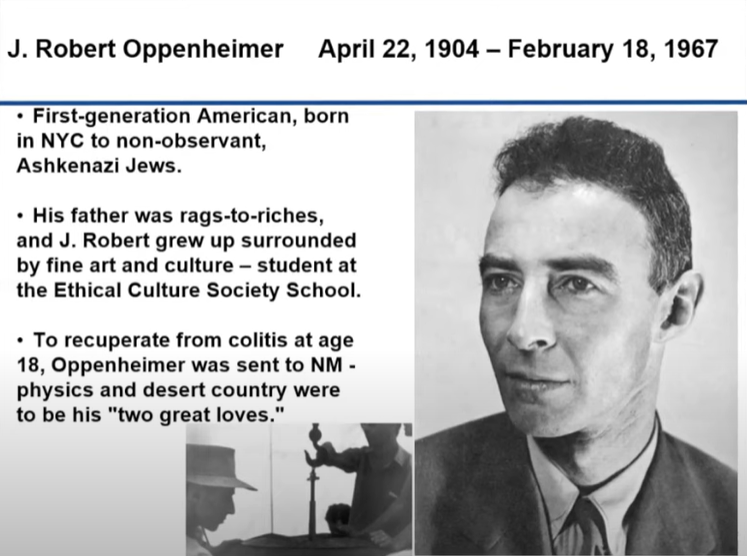
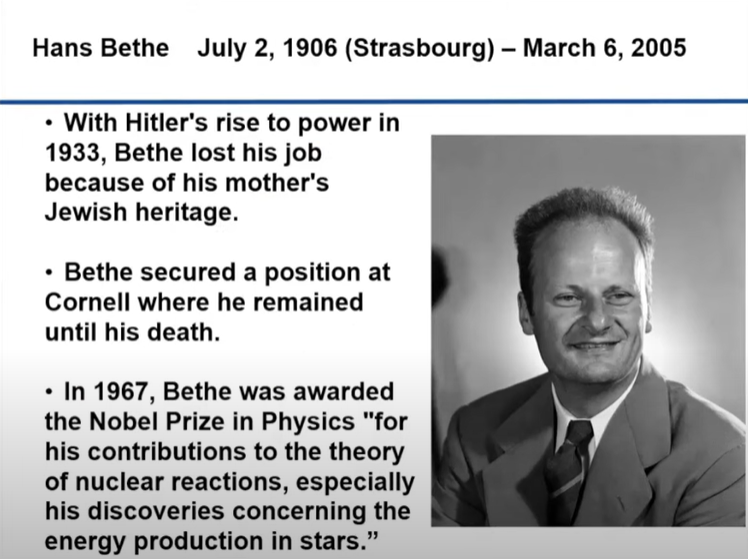

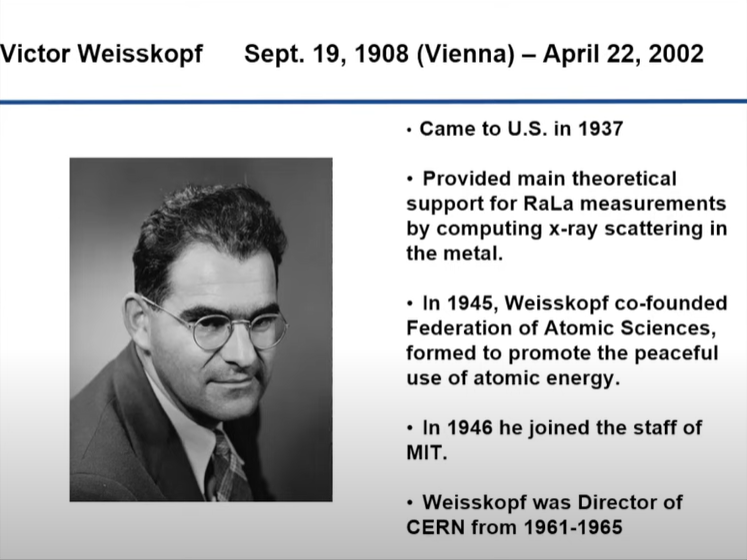
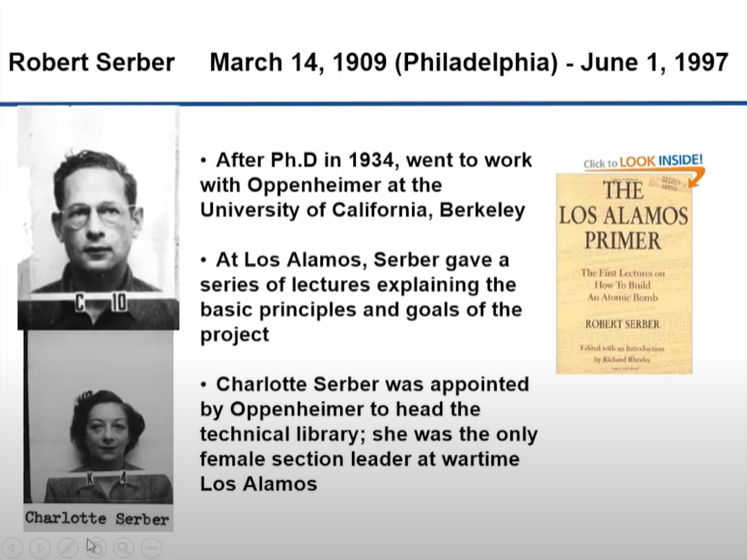
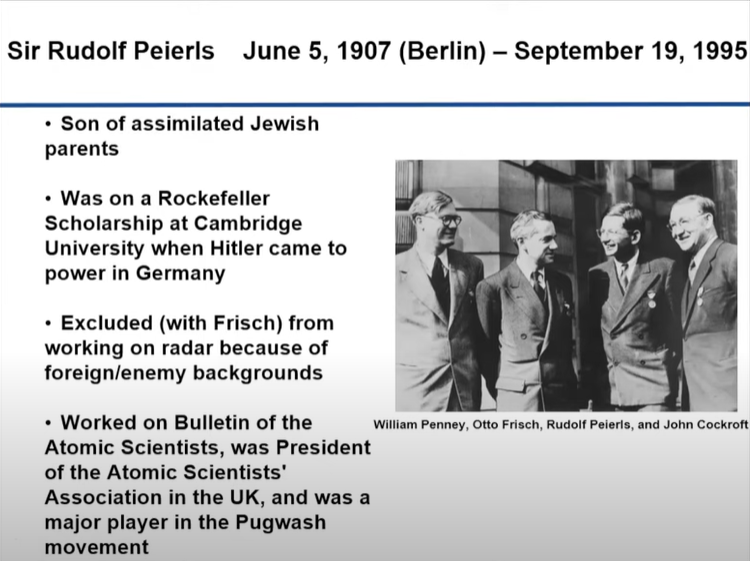
It was getting late, and we wanted to make sure to leave Los Alamos before the snowstorm. On the way out of the city, we made a quick stop to photograph what was originally the security gate to the complex. It too appears in the Oppenheimer movie.
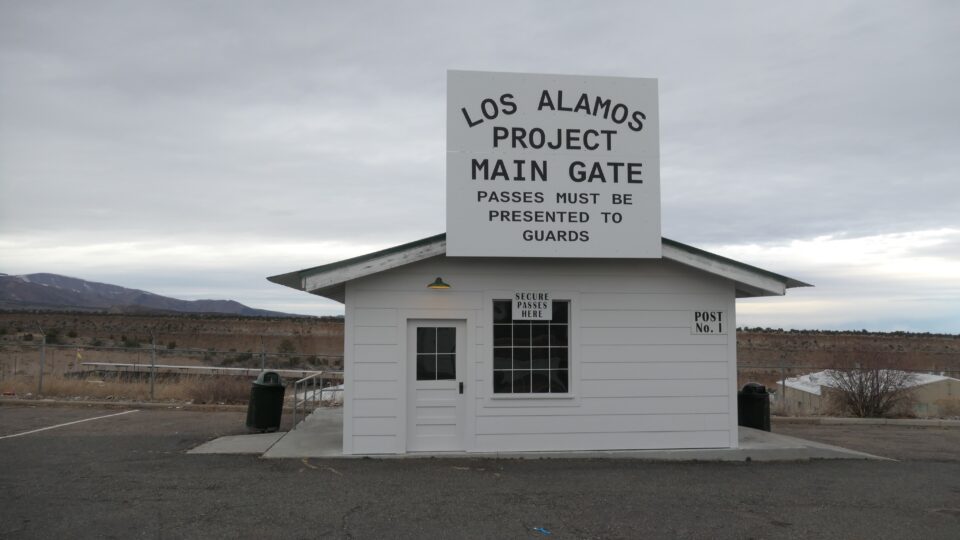
We were not the only ones leaving Los Alamos now. It was the end of the workday and traffic was heavy. Today the place is still used as a research facility and over 14,000 people are employed there. Only about a third of them live in Los Alamos and the rest commute, many from Sante Fe.
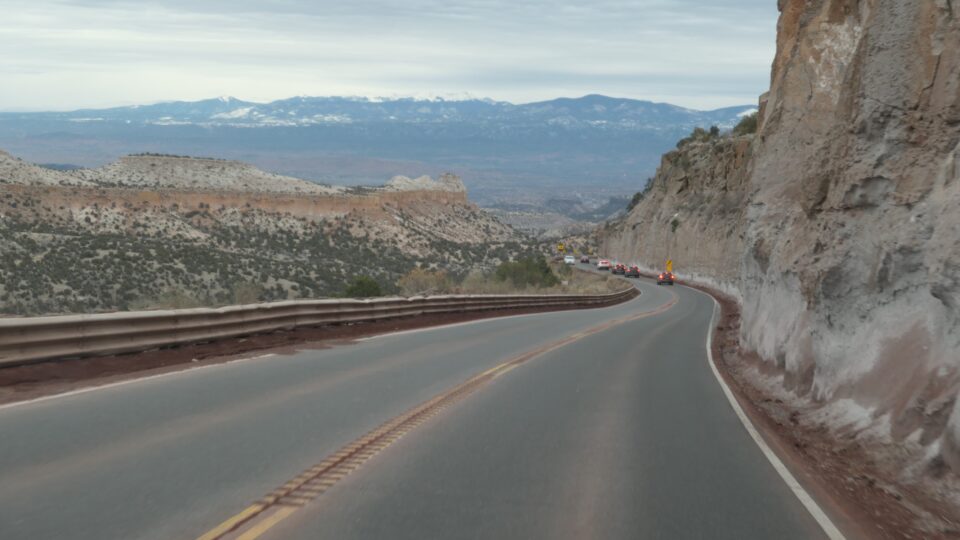


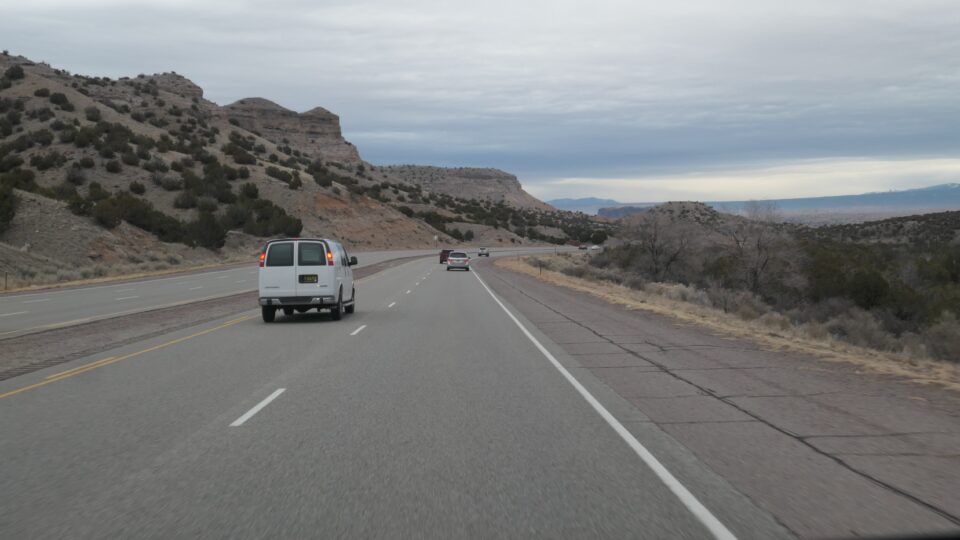
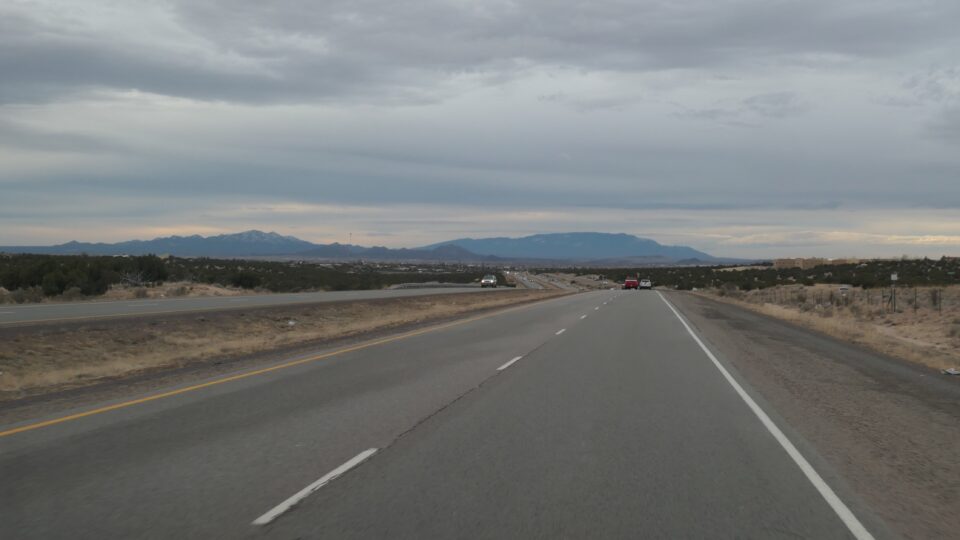
We reached our campsite in Sante Fe just as it got dark. It was a huge place, but there were only about five other campsites occupied. I mistakenly thought, because of the heat here in the summer, that winter would be high season. Turns out that was wrong – despite the heat, summer is high season, and winter has few visitors. The snow and cold of the next few days helped me understand why.
